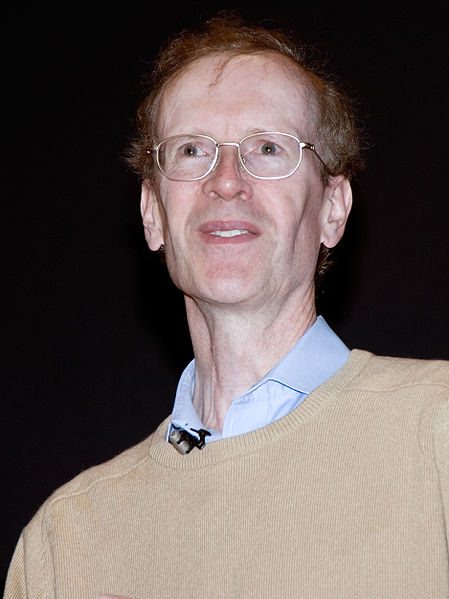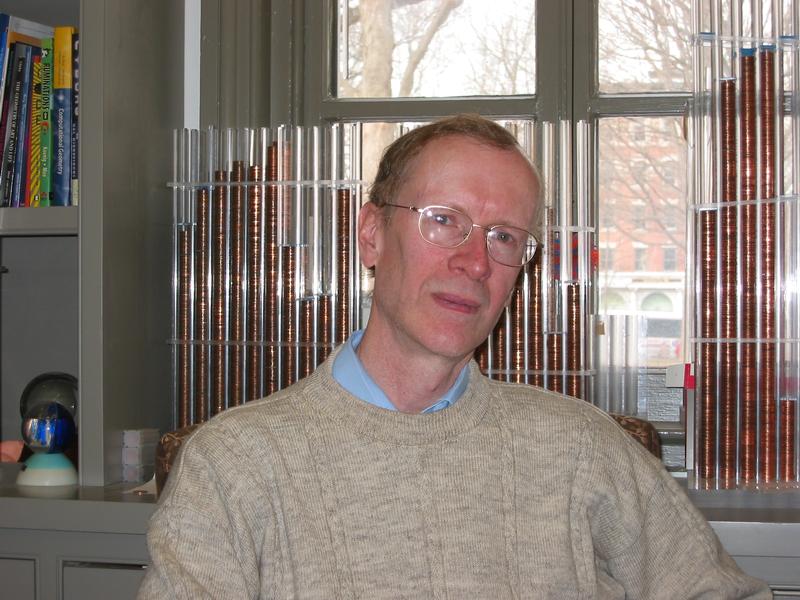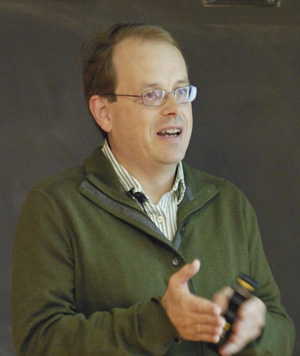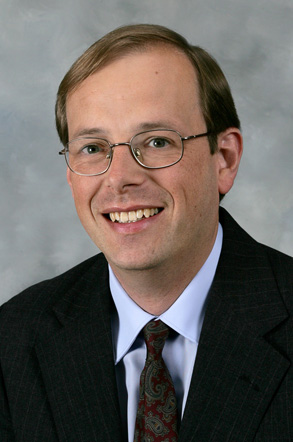<Back to Index>
- Mathematician Andrew John Wiles, 1953
- Mathematician Richard Lawrence Taylor, 1962
PAGE SPONSOR


Sir Andrew John Wiles KBE FRS (born 11 April 1953) is a British mathematician and a Royal Society Research Professor at Oxford University, specializing in number theory. He is most famous for proving Fermat's Last Theorem.
Wiles is the son of Maurice Frank Wiles (1923 – 2005), the Regius Professor of Divinity at the University of Oxford and Patricia Wiles (née Mowll). His father worked as the Chaplain at Ridley Hall, Cambridge, for the years 1952 – 55. Wiles was born in Cambridge, England, in 1953, and he attended King's College School, Cambridge, and The Leys School, Cambridge.
Wiles discovered Fermat's Last Theorem on his way home from school when he was 10 years old. He stopped by his local library where he found a book about the theorem. Puzzled by the fact that the statement of the theorem was so easy that he, a ten - year old, could understand it, he decided to be the first person to prove it. However, he soon realized that his knowledge of mathematics was too small, so he abandoned his childhood dream, until 1986, when he heard that Ribet had proved Serre's ε-conjecture and therefore established a link between Fermat's Last Theorem and the Taniyama - Shimura conjecture.
Wiles earned his bachelor's degree in mathematics in 1974 after his study at Merton College, Oxford, and a Ph.D. in 1980, after his research at Clare College, Cambridge.
After a stay at the Institute for Advanced Study in New Jersey in 1981, Wiles became a professor at Princeton University. In 1985 – 86, Wiles was a Guggenheim Fellow at the Institut des Hautes Études Scientifiques near Paris and at the École Normale Supérieure. From 1988 to 1990, Wiles was a Royal Society Research Professor at Oxford University, and then he returned to Princeton.
In October 2009 it was announced that Wiles would again become a Royal Society Research Professor at Oxford in 2011.
Wiles's graduate research was guided by John Coates beginning in the summer of 1975. Together these colleagues worked on the arithmetic of elliptic curves with complex multiplication by the methods of Iwasawa theory. He further worked with Barry Mazur on the main conjecture of Iwasawa theory over the rational numbers, and soon afterward, he generalized this result to totally real fields.
Starting in the summer of 1986, based on successive progress of the previous few years of Gerhard Frey, Jean - Pierre Serre and Ken Ribet, Wiles realized that a proof of a limited form of the modularity theorem might then be in reach. He dedicated all of his research time to this problem in relative secrecy. In 1993, he presented his proof to the public for the first time at a conference in Cambridge. In August 1993, however, it turned out that the proof contained a gap. In desperation, Wiles tried to fill in this gap, but found out that the error he had made was a very fundamental one. According to Wiles, the crucial idea for circumventing, rather than closing this gap, came to him on 19 September 1994. Together with his former student Richard Taylor, he published a second paper which circumvented the gap and thus completed the proof. Both papers were published in 1995 in a special volume of the Annals of Mathematics.
His proof of Fermat's Last Theorem has stood up to the scrutiny of the world's mathematical experts. Wiles was interviewed for an episode of the BBC documentary series Horizon that focused on Fermat's Last Theorem. This was renamed "The Proof", and it was made an episode of the Public Broadcasting Service's science television series Nova. He is a foreign member of the United States National Academy of Sciences since 1996. He remains a citizen of the United Kingdom.
Wiles is married to Nada Canaan Wiles, who earned her Ph.D. in microbiology from Princeton University in New Jersey, and they have three daughters: Clare, Kate and Olivia. He lives in Oxford.


Richard Lawrence Taylor (born 19 May 1962) is a British mathematician working in the field of number theory. A former research student of Andrew Wiles, he returned to Princeton to help his advisor complete the proof of Fermat's last theorem.
Taylor received the 2007 Shaw Prize in Mathematical Sciences for his work on the Langlands program with Robert Langlands.
He received his B.A. from Clare College, Cambridge, and his Ph.D. from Princeton University in 1988. From 1995 to 1996 he held the Savilian Chair of Geometry at Oxford University and Fellow of New College, Oxford, and he is currently the Herchel Smith Professor of Mathematics at Harvard University.
He received the Whitehead Prize in 1990, the Fermat Prize, the Ostrowski Prize in 2001, the Cole Prize of the American Mathematical Society in 2002, and the Shaw Prize for Mathematics in 2007. He was also elected a Fellow of the Royal Society in 1995.
One of the two papers containing the published proof of Fermat's Last Theorem is a joint work of Taylor and Andrew Wiles.
In subsequent work, Taylor (along with Michael Harris) proved the local Langlands conjectures for GL(n) over a number field. A simpler proof was suggested almost at the same time by Guy Henniart.
Taylor, together with Christophe Breuil, Brian Conrad, and Fred Diamond, completed the proof of the Taniyama – Shimura conjecture, by performing quite heavy technical computations in the case of additive reduction.
Recently, Taylor, following the ideas of Michael Harris and building on his joint work with Laurent Clozel, Michael Harris, and Nick Shepherd - Barron, has announced a proof of the Sato – Tate conjecture, for elliptic curves with non - integral j-invariant. This partial proof of the Sato – Tate conjecture uses Wiles's theorem about modularity of semistable elliptic curves.
Taylor is married to Christine Taylor (a mathematical biologist). They have two children: Jeremy and Chloe. He is also the son of British physicist, John C. Taylor.